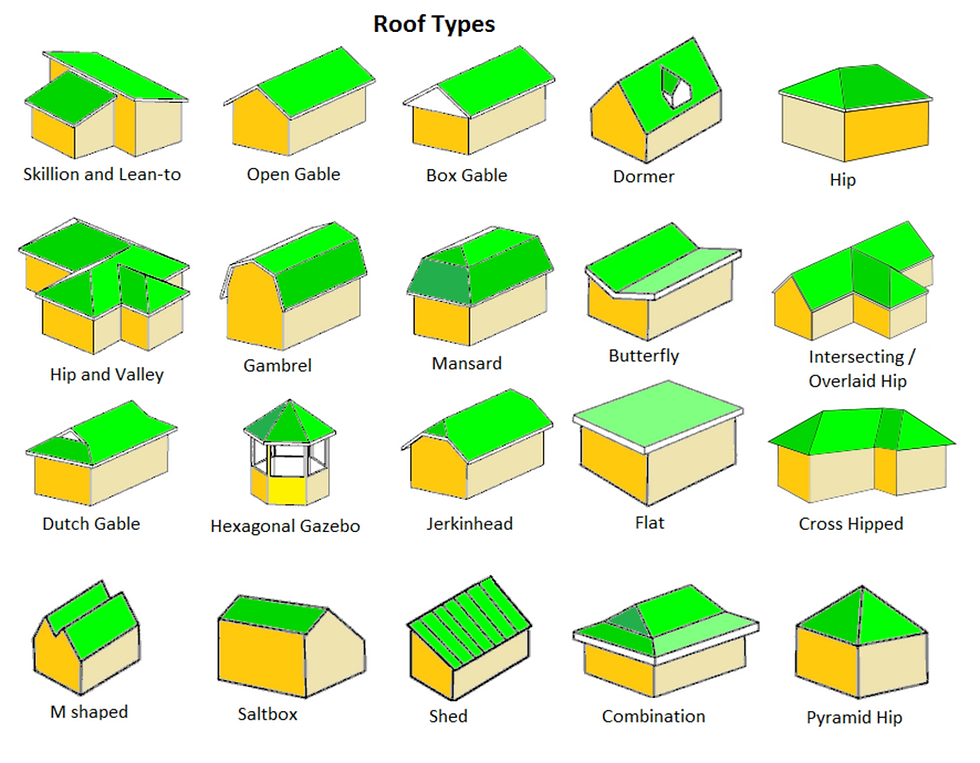Roofing Underlayment
- carissa184

- Aug 12, 2016
- 2 min read
Updated: Sep 20, 2021
Most builders spend a lotof time and money making sure the walls of their homes remain weather proof, using a moisture management routine that involves housewraps, home slickers, and flashing. The roof, however, seems to be another matter entirely.
Some of the same construction professionals take a more relaxed approach to their roofs. They may install an ice and water shield on the first 3 feet of the roof or use 15-pound felt on the entire deck, but that’s the extent of their program. Felt is an old standby, they say, allowing the roof to breathe and shed moisture. These builders also say they have not had any problems using this construction method, which raises the question: Is it really necessary for builders to use some type of underlayment between the roof deck and the roofing material?
“Generally, yes,” says Maureen M. Mahle of Steven Winter Associates, based in New York City. “The purpose of underlayment is to serve as a secondary drainage plane. Water can and will penetrate the roofing at some point. Underlayment provides a ‘flashing’ to direct that water away from seams, joints, and vulnerable places in the building assembly.”
Underlayment functions much like housewrap: It protects the roof deck from bulk water, but it allows the deck to breathe and release moisture from inside the home.
The preferred method of roofing protection in the old days was asphalt-saturated felt building paper, says the Partnership for Advancing Technology in Housing (PATH), a joint venture between the home building industry and federal agencies. But now the builder’s weapon of choice is synthetic underlayment.
“Mimicking the attributes of housewraps, synthetic roof underlayments are now available to serve the same function as a secondary weather barrier with better resistance to tearing, moisture, and ultraviolet rays than traditional roofing felt,” PATH writes on its website.
These products are made from a variety of materials, such as polypropylene, polyester, and fiberglass fabric. They are lighter in weight than felt building paper and usually can be exposed to weather for six months.
“Moisture resistance and hardiness make synthetic underlayment a good choice as a secondary weather-resistant barrier under roof cladding,” PATH says. “Polypropylene and similar synthetic materials resist moisture, tearing, and degradation from UV rays, making them a durable, relatively long-term covering that can be used for disaster response. Fire-rated synthetic underlayments can provide added protection against fire spreading through the roof in multifamily housing and/or in regions of the country that are prone to wildfires.”
Earlier this year, Wilmington, Del.–based DuPont Building Innovations introduced RoofLiner, a lightweight synthetic roofing underlayment that the company says provides excellent protection against leaks as well as enhanced durability and tear resistance. “Durable, high-quality roof underlayment is the foundation of any roofing system,” said Alan Hubbell, DuPont’s marketing manager for builders and remodelers, in a statement for the product’s introduction. “The competitive pricing and enhanced features of DuPont RoofLiner make this product a welcome addition to the DuPont Weatherization Products portfolio,” he added.
Joplin, Mo.–based TAMKO Building Products has a new introduction of its own. The company says its Peel-N-Stick Felt is the industry’s first and only saturated felt underlayment with a release film backing that can be peeled off and the underlayment applied directly to the roof deck—making it easy to install, says Stephen McNally, TAMKO’s vice president of sales and marketing.
















Comments